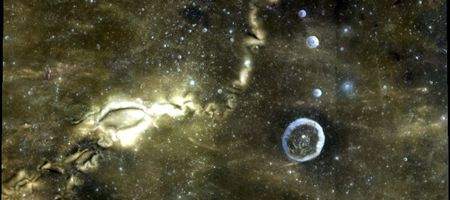Scientists from the UK’s Rutherford Appleton Laboratory have made a discovery that could help future astronauts shelter from radiation on the moon.

Their work focused on the origin of the strange ‘lunar swirls’ – patches of relatively pale soil, some tens of miles across. In the Apollo era it was realised that they were associated with localized magnetic fields in the lunar crust, known as lunar magnetic anomalies.
These anomalies created fully-formed but miniature magnetospheres similar to that created by the Earth’s planet-wide magnetic field does.
Using a combination of the space data and laboratory scale experiments using a ‘Solar Wind Tunnel’, the team was able to identify how such small scale magnetic ‘bubbles’ deflected the solar wind particles bombarding the moon.
“The active force which deflect the solar wind particles is electric, not magnetic. The electric field is created naturally by the edges of the moon’s magnetic ‘bubbles’,” says lead scientist Dr Ruth Bamford.
“What matters is the gradient in the magnetic field, rather than the overall size of the magnetic bubble. So they can be as small as you like – as long as the gradient is steep enough.”
Understanding how these mini-magnetospheres produce a cavity in the solar wind and exclude the interplanetary magnetic field could lead to a way of artificially manipulating the phenomenon to create safe havens for future space explorers.
“We still need to determine quite how effective this mechanism would be at deflecting the real hazardous higher energy particles. The jury is still out on that one, but such an active shield could make the difference between survivable and certain death for astronauts on their way to Mars,” sys Bamford.
The lunar soil was originally white but has been darkened over time by exposure to the charged particles of the solar wind.
It has long been thought that the swirls were a result of magnetic shielding of the lunar surface from the solar wind, but nobody understood how the relatively weak magnetic fields associated with lunar swirls could sufficiently protect the moon’s surface over hundreds of millions of years to prevent surface darkening and produce such finely detailed patterns.
“Close to the moon’s surface, the strength of a magnetic anomaly is likely to be very irregular, featuring overlapping cavities and gradients,” says Bamford. But, she adds, “We cannot know the precise arrangement without going there to see for ourselves.”





